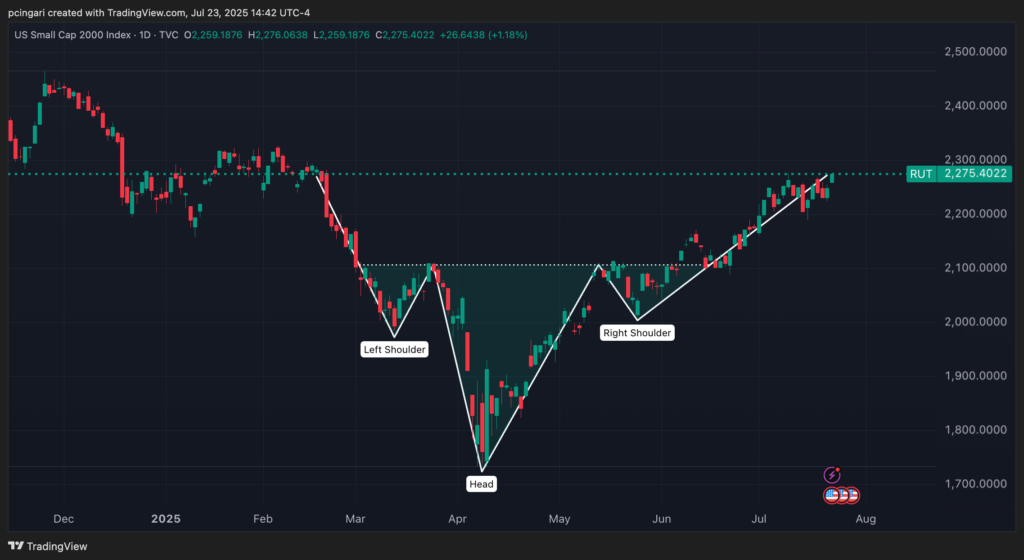
Valuations are low, tax laws have shifted, and technical trends are turning—Wall Street is starting to reconsider the small-cap space.
The Russell 2000 index – as tracked by the iShares Russell 2000 ETF (NYSE:IWM) – has lagged large-cap indices in 2025—but a potential shift might be just around the corner.
In a note published Wednesday, LPL Financial's chief equity strategist Jeff Buchbinder laid out five catalysts that may favor small-cap equities heading into late 2025.
“Small cap equities remain one of the most paradoxical asset classes — frequently dismissed yet frequently cited as a contrarian buying opportunity on attractive valuations but often dissed by markets,” Buchbinder said.
1. Trump's Tax Overhaul May Boost Small Cap Profits
LPL highlights that under the One Big Beautiful Bill Act, small businesses will be "once again permitted to fully deduct domestic research and development (R&D) expenses in the year they're incurred."
The deduction applies to software development and product innovation, and "should serve to significantly benefit smaller businesses… and thus increase net profits."
LPL adds that "the increase in allowable deductions of interest costs and permanent 100% bonus depreciation" could favor smaller firms more than large caps.
2. The Valuation Gap Between Large and Small Caps Keeps Widening
According to LPL, the Russell 1000 trades at a price-to-book (P/B) of 5.35, while the Russell 2000 trades at just 2.03.
"This growing disparity suggests that investors are paying more than twice as much for each dollar of book value in large cap stocks," the report said.
The firm notes that while large-cap premiums reflect investor confidence in earnings stability—especially in AI-focused names—"small cap equities become increasingly attractive on a relative basis."
3. The Russell 2000 Has Broken Out Technically
Since bottoming in April, the Russell 2000 has rallied nearly 30%, pushing the index out of a major inverse head-and-shoulders pattern.
LPL estimates "a minimum technical-based price objective near 2,480," coinciding with the November 2024 highs.
However, the firm said the Russell 2000 vs. S&P 500 "remains in a multi-year downtrend," making it difficult to argue for sustainable small-cap outperformance without further confirmation.

4. Credit Conditions Are Still Favorable
Small caps rely heavily on debt to fuel growth. Fortunately, corporate credit spreads remain tight and base rates stable.
“Small caps tend to be more sensitive to domestic economic cycles, meaning they could outperform if the U.S. economy remains resilient or accelerates,” the analyst said.
However, if the Fed is forced to cut rates due to a weakening economy—not falling inflation—those same small caps could be at risk.
5. A Broader Market Rotation Could Help
According to LPL, "a meaningful rotation in market leadership" is underway, with non-U.S. small caps and sectors like basic materials and technology outperforming.
They also note that "non-U.S. small cap stocks have emerged as key beneficiaries of recent U.S. tariff policy."
A falling U.S. dollar earlier in 2025 has enhanced the appeal of foreign assets, but a short-term dollar rebound "could also put domestic small caps in a more favorable position."
Read Next:
Image created using artificial intelligence via Midjourney.







